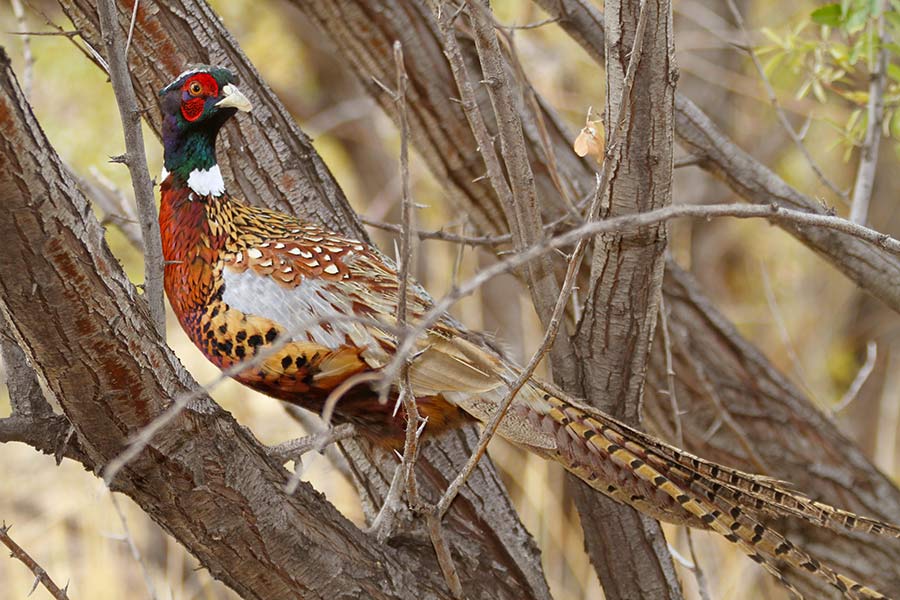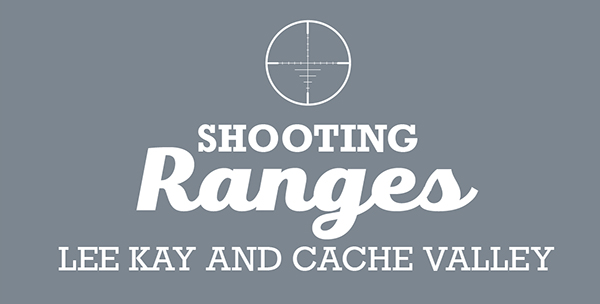Frequently asked questions about hunting Utah pheasants
When is pheasant hunting season?
- Youth pheasant hunt (statewide): Oct. 25-30, 2025
- General season pheasant hunt (statewide): Nov. 1-Dec. 7, 2025
For more information about pheasant hunting seasons, read the Utah Upland Game and Turkey Guidebook.
What youth hunt opportunities are available?
The youth pheasant hunt is open statewide Oct. 25-30, 2025. Pheasants will be released before the hunt in areas indicated on the pheasant release map. There are also some additional opportunities for young hunters.
Does the Utah Division of Wildlife Resources release pheasants?
Yes. The Division releases approximately 12,000 rooster pheasants for the youth and general-season hunts. There is not a fixed schedule of when pheasants will be released, but birds are generally released for the season opener and weekends.
Where are pheasants released?
Pheasants are released throughout Utah based on how many pheasant hunters are afield in a given area. More pheasants are usually released in areas that are close to larger cities. See a map of pheasant release areas.
What license or permit is required to hunt pheasant?
You must possess a valid Utah hunting or combination license to hunt pheasant and other upland game. You can buy a license online, at a Division office or at a license agent location. Utah does not require an additional hunting permit or a habitat or pheasant stamp.
Are pheasant hunters required to wear hunter orange?
Hunter orange is not required for upland game hunts in Utah, but we strongly encourage pheasant hunters to wear hunter orange. Pheasant hunting season takes place at a time of the year when there are many active hunts. Hunter orange makes you more visible to other hunters.
What are the legal shooting hours?
You can shoot from 30 minutes before sunrise to 30 minutes after sunset. For official sunrise and sunset times, see page 45 of the Utah Upland Game and Turkey Guidebook.
Do I need a magazine plug to hunt pheasants on Waterfowl Management Areas?
If you are hunting pheasants on a WMA property, you do not have to have a magazine plug. If you plan to hunt any migratory species, your shotgun must be limited to a total capacity of three rounds or less.
What is the bag and possession limit?
The daily bag limit is 2 roosters and the total possession limit is 6 roosters.
Is nontoxic shot required when hunting pheasants in certain areas?
Yes, nontoxic shot is required when hunting in waterfowl management areas, refuges and some wildlife management areas. See page 35 of the Utah Upland Game and Turkey Guidebook for details.
Frequently asked questions about pheasant populations in Utah
Are pheasants native to Utah?
Pheasants — Latin name Phasianus colchicus, also called ring-necked pheasant or common pheasant — are native to Asia and parts of Europe. They were first introduced into Utah in the late 1800s and early 1900s. There are now pheasants in 27 out of 29 counties in Utah, although habitat availability and suitability in many counties limits their population range and size.
What kind of habitats do pheasants prefer?
Pheasants prefer brushy or woody habitat near water, and are especially drawn to grasslands and agricultural areas for year-round food and shelter. These types of covered habitat are also well suited for pheasant shelter while they are nesting, brooding and rearing their young. Small grain or hay fields surrounded by weeds, pasturelands, fence lines, irrigation ditch banks, grasslands, rocky outcroppings and crop stubble provide an ideal mixture of food and cover for pheasants.
Why are pheasants so scarce in Utah now, but were more abundant in the past?
Historically, pheasant populations in Utah concentrated around grasslands and small farms. The available evidence suggests that relocated pheasants, along with emigration from groups of established wild birds, was responsible for the expansion of these nonnative game bird populations in the state after they were introduced in the late 1800s and early 1900s. In this time period, farming practices and small-scale agriculture — which was more prevalent then — provided good habitat for wild pheasants.
The factors associated with declines in pheasant populations nationwide are also a concern in Utah. These include decreased crop diversity, wide-spread spraying of herbicides, the conversion of native grass and scrubland habitats to large-scale agriculture, as well as increasing urban development. All of these factors reduced or fragmented the amount of suitable pheasant habitat statewide, and as a result, wild populations have declined.
What is the DWR doing to help pheasants?
The DWR manages and improves habitat for species that primarily occupy public lands. Since 2006, the Utah Department of Natural Resources Watershed Restoration Initiative has worked with public agencies and private partners to develop habitat treatments that protect and improve upland game habitats. WRI projects restore diverse habitats for nesting and brood-rearing cover, improve riparian habitat areas and more.
Since 2006, WRI and DWR contributions, along with in-kind partnerships and project support, have totalled over $20 million in habitat-improvement projects benefiting upland game species, including pheasants.
Why don't we implement more predator control programs for pheasants and similar species?
Predators can impact pheasant and other upland game populations, especially when habitat is also degraded in quality and/or quantity. However, pheasants evolved alongside predators and are generally adapted to regular pressure from them. For example, wild pheasants' reproductive rates tend to be high — by having a large numbers of chicks at one time — and in good habitat with plenty of food and cover, this offsets the impacts of typical predator pressure.
Unfortunately, as supporting habitat for pheasants has decreased (see section above), the lack of sufficient cover and shelter can result in greater predator impacts on nests and adult birds. Habitats modified for human purposes can also allow for predator populations to expand by creating artificial sources of food (such as trash dumps and animal feed storage), water sources, or more opportunities for predator nesting and denning areas.
Expanding or improving habitats to support pheasant and other upland game species has been shown to be the most efficient way to manage predator impacts on these game populations.
Why do we stock pheasants?
Many wildlife management areas and waterfowl management areas support habitat to maintain or improve wild pheasant populations, and the DWR releases thousands of pen-raised pheasants on various WMAs, Walk-in Access properties and other public lands around the state each week during the general-season hunt.
The biggest goal of our stocking programs is to provide additional hunting opportunities through "put-and-take" programs, such as Utah's chukar and pheasant releases just prior to the hunting seasons. Utah's pheasant stocking program is intended solely as a current-season hunting opportunity, and is not meant to maintain or restore wild pheasant populations.
While it might seem like a good practice to release pen-reared birds to increase pheasant populations, these birds unfortunately have extremely low survival rates compared to wild birds. The very small percentage that do survive to breeding season do not readily reproduce. And stocking has proven to be ineffective at maintaining or increasing established breeding populations. We are continually working to improve quality habitat to maintain and hopefully increase wild pheasant populations, which have a greater chance of long-term survival and reproduction.
How is the pheasant release program funded?
A Hunter Education grant funds 75% of the pheasant release program through the Pittman-Robertson Act — formally called the Pittman-Robertson Federal Aid in Wildlife Restoration Act of 1973. Much of PR funding comes from an excise tax on hunting and fishing equipment. The remaining 25% match for pheasant releases comes from a combination of non-federal funds from license sales and conservation partner groups.
Anyone who purchases a Utah hunting or combination license can hunt released birds on public land at no additional cost.
How is funding for pheasant and upland game habitat improvement generated?
In the early 1990s, funds for upland game habitat improvement came through state-authorized "upland game habitat stamps" required for anyone hunting pheasant, partridge, quail, sage-grouse, dusky grouse, ruffed grouse, mourning dove, cottontail rabbit and snowshoe hare. Initially, the annual $5 stamp was required for all hunters aged 16 years and older. Over the years, the stamp cost and age requirements changed slightly.
During the 1995 general session, the Utah Legislature created the Wildlife Habitat Account, administered by the Utah Habitat Council. This account provides dedicated funds from hunting and fishing license sales that must be used to enhance, preserve, manage, acquire and protect fish and wildlife habitat. The funds may also be used to improve public access to fishing and hunting areas. The state legislature discontinued the upland game stamp requirement in 2001 in favor of funding conservation directly through the Wildlife Habitat Account.
According to Utah Code, each year up to $230,000 or 10% of the annual deposits to the account — whichever amount is greater — shall be allocated to projects that benefit upland game species. As an example of what those dollars amount to annually, in 2023, the Habitat Council provided $290,301 in funds toward upland game, specifically.
Where do I find more detailed information about how pheasants and upland game species are managed in Utah?
See the Utah Upland Game Management Plan for more information. Also listen to "Wild" podcast episode 51 about pheasants in Utah.

















